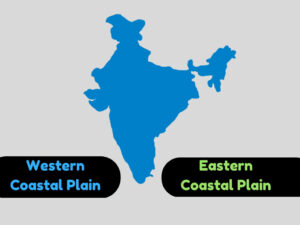Delta vs Estuary: Understanding the Differences
What is a Delta?
A delta is a landform that forms at the mouth of a river, where it meets a body of water, such as an ocean, sea, lake, or another river. Deltas are typically composed of sediment deposited by the river over time, creating a fan-like shape. They are prone to constant changes due to the action of water and sediment flow.
Examples of Deltas
Some famous examples of deltas include:
- Nile Delta in Egypt
- Mekong Delta in Vietnam
- Ganges-Brahmaputra Delta in Bangladesh and India
- Mississippi River Delta in the United States
Uses of Deltas
Deltas have significant ecological importance and provide various benefits to humans and wildlife. They serve as fertile agricultural areas, provide habitat for numerous species, and support industries such as fishing and tourism.
What is an Estuary?
An estuary is a partially enclosed coastal body of water where freshwater from rivers and streams meets and mixes with saltwater from the ocean. Estuaries are typically characterized by brackish water, a mixture of fresh and saltwater, and are influenced by tides. They often feature diverse and productive ecosystems.
Examples of Estuaries
Some well-known estuaries around the world include:
- Chesapeake Bay Estuary in the United States
- Sundarbans Estuary in Bangladesh and India
- Rio de la Plata Estuary in Argentina and Uruguay
- Thames Estuary in the United Kingdom
Uses of Estuaries
Estuaries play a crucial role in various ecological processes. They serve as nursery areas for many marine species, filter pollutants, mitigate coastal erosion, and provide recreational opportunities like boating and birdwatching.
Differences Between Delta and Estuary
| Difference Area | Delta | Estuary |
|---|---|---|
| Location | Typically found at the mouth of a river | Located where freshwater meets saltwater along the coast |
| Shape | Fan-like shape | Varies in shape, often characterized by a funnel-like appearance |
| Composition | Primarily sediment deposited by rivers | A mix of freshwater and saltwater |
| Water Flow | River water flows into the delta | Both river and ocean tides influence the water flow |
| Ecosystem | Supports a wide variety of terrestrial and aquatic habitats | Diverse ecosystems with various plant and animal species |
| Navigation | May hinder navigation due to sedimentation | Provides navigable channels for boats and ships |
| Human Settlements | Deltas are often densely populated due to fertile soil | Estuaries attract human settlements due to natural resources and trade opportunities |
| Geological Formation | A result of sediment deposition over time | Formed through the combined processes of erosion, deposition, and tidal currents |
| Size | Varies greatly in size, ranging from small to large | Can range from small estuaries to large coastal bays |
| Water Salinity | Mainly freshwater with varying salinity levels near the coast | Brackish water, a mix of fresh and saltwater |
Conclusion
In summary, deltas and estuaries are both unique and important coastal features. While deltas are landforms formed by sediment deposition at the mouth of a river, estuaries are partially enclosed bodies of water where freshwater meets saltwater along the coast. Their differences lie in location, shape, water composition, ecological significance, human uses, and geological formation, among other aspects.
People Also Ask:
- Q: How are deltas and estuaries formed?
A: Deltas form through sediment deposition at the mouth of a river, while estuaries are formed through the combined processes of erosion, deposition, and tidal currents along the coast. - Q: Can deltas and estuaries be found in lakes?
A: Deltas can form in lakes when rivers flow into them, whereas estuaries are typically associated with coastal areas where rivers meet the ocean. - Q: What are the ecological benefits of deltas and estuaries?
A: Both deltas and estuaries support diverse ecosystems, provide habitat for various species, and offer numerous ecosystem services such as filtration of pollutants and shoreline protection. - Q: Are deltas and estuaries affected by human activities?
A: Yes, human activities such as dam construction and pollution can have significant impacts on the health and functioning of deltas and estuaries. - Q: Can deltas and estuaries change over time?
A: Yes, deltas and estuaries are dynamic environments that undergo constant changes due to natural processes, human interventions, and factors such as sea-level rise and climate change.


